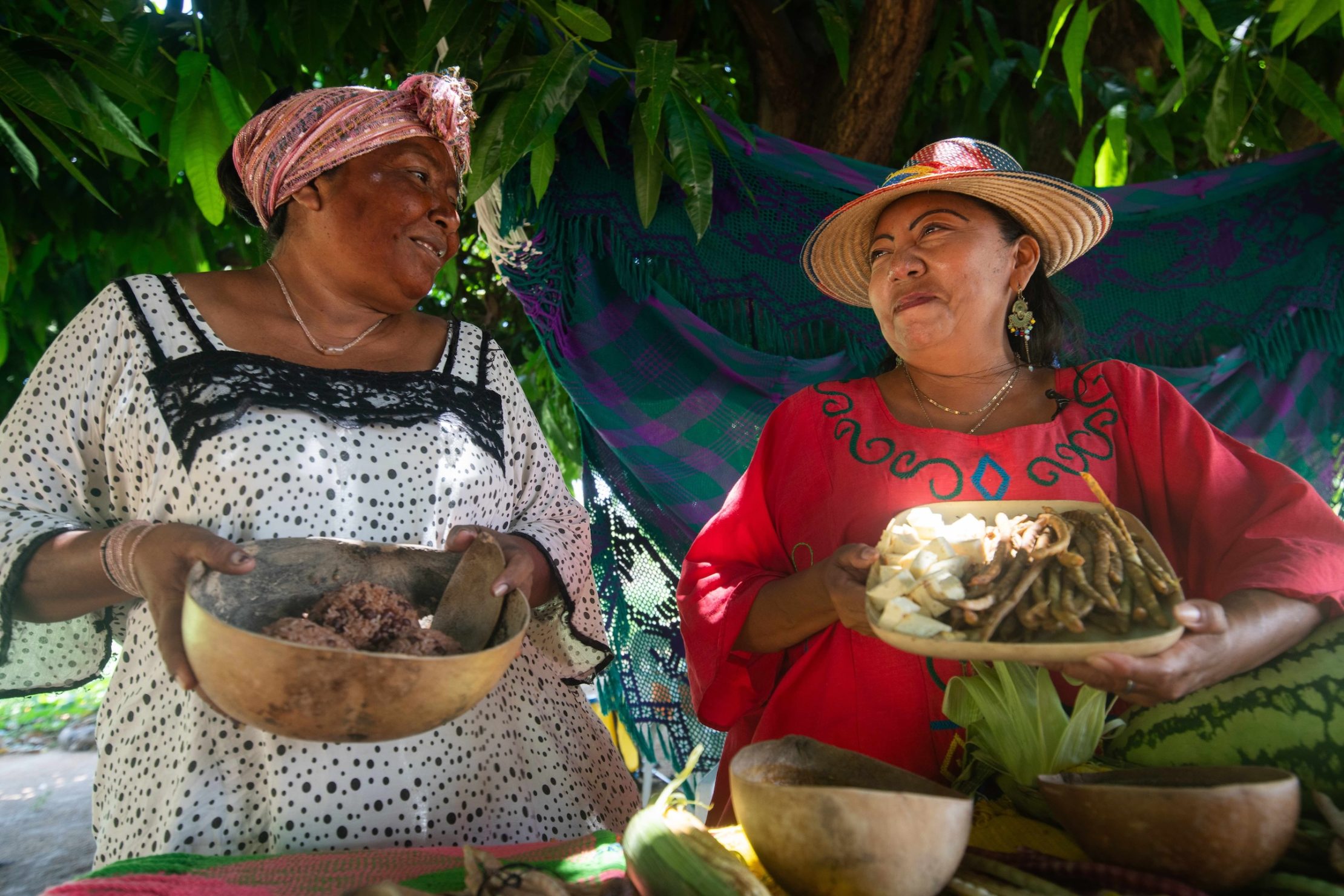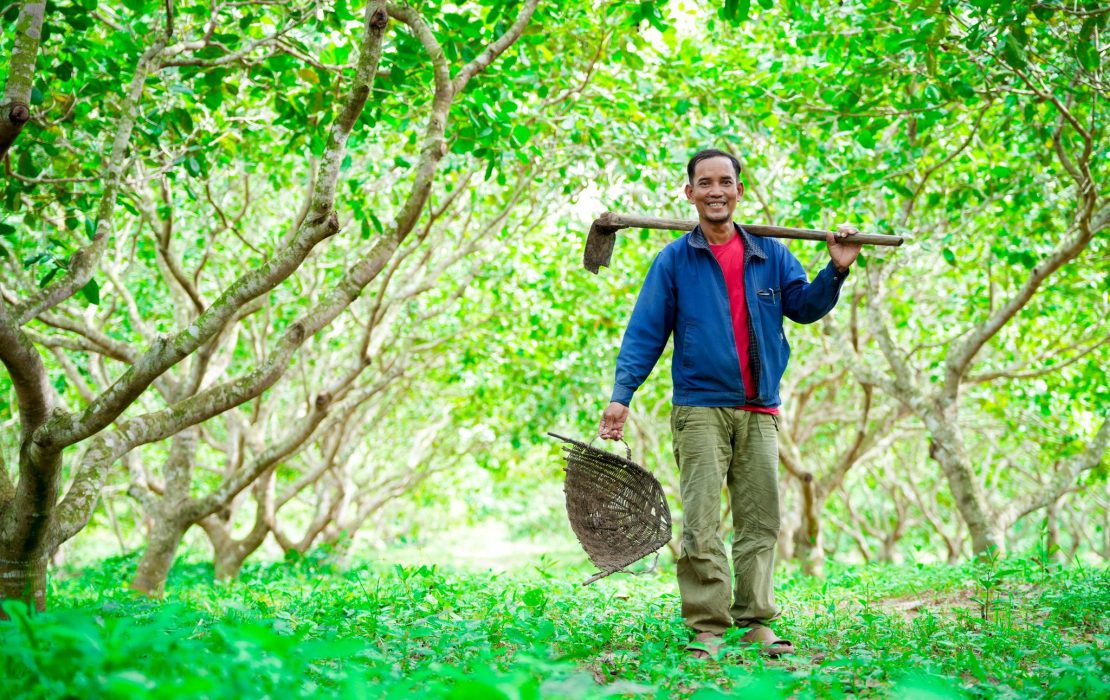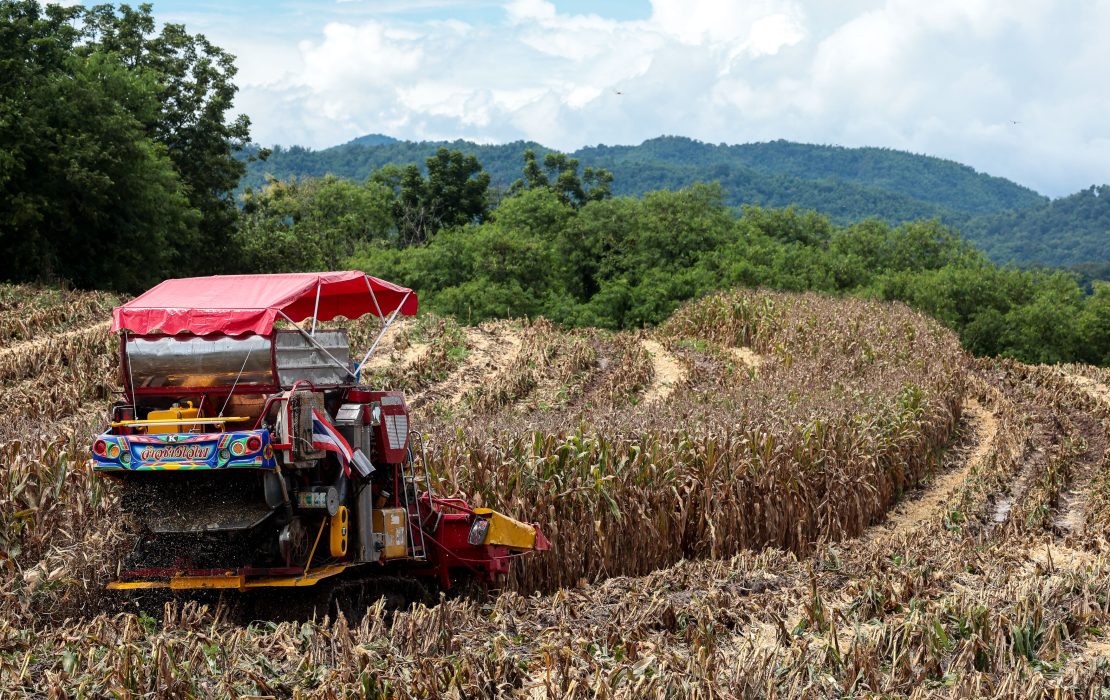
Photo: Felipe Rodriguez/FAO
Food is more than what we eat. It is the foundation of our economies, health and communities. Almost half the world’s population lives in households linked to food production.
But climate change is threatening our food systems, putting lives and livelihoods at risk. Agriculture, livestock raising, fisheries, forestry, aquaculture and food value chains are all highly vulnerable to the impacts of rising temperatures, shifting rainfall patterns, and more frequent and intense extreme weather events.
If we continue to release planet-warming emissions into the atmosphere, these impacts will continue to intensify, reducing crop yields, killing livestock, causing a higher incidence of pests and diseases, and leading to even more biodiversity loss and land degradation.
Millions of people worldwide have already been exposed to acute and severe food insecurity because of climate change impacts, with vulnerable groups, including women, small-scale farmers and low-income households hit the hardest.
Building resilience within our food systems is therefore one of the most urgent priorities of our time. But this doesn’t mean producing more in the same way as before to compensate for losses. Transforming the way we produce food is critical to adapt to the climate impacts already happening and increase resilience. It is also essential for tackling the climate crisis as almost one third of global greenhouse gas emissions comes from agriculture and food systems.
As UNDP, we support countries to transform their agriculture and food systems, building on their national climate plans. One of our flagship initiatives in this area is the SCALA programme, implemented jointly with the Food and Agriculture Organization of the United Nations (FAO). Through SCALA, we support 12 countries carry out value chain assessments, develop national policies and plans, and map out financing strategies to boost the climate resilience of their agriculture and food systems.
Based on the programme’s work, we have five recommendations for increasing the climate resilience of agriculture and food systems:
1. Agriculture and food value chains must be diversified, equitable and regenerative
Diversified agriculture and food value chains can help promote a variety of crops and market opportunities that reduce dependency on a single commodity, therefore increasing resilience. Moreover, when a value chain is equitable, it can ensure that benefits and decision-making power are shared fairly between producers, processors and groups that might be more vulnerable to climate impacts such as smallholder farmers, women and marginalized communities. Regenerative value chains go a step further by restoring soil health, biodiversity and ecosystems while maintaining productivity, ensuring that agricultural growth supports both people and the environment.
A value chain analysis can identify the economic and financial opportunities in that chain, all actors that take part in it as well as measures to promote sustainability and resilience. Under SCALA, a value chain analysis for cassava and cashew production in Cambodia’s Steung Treng province revealed the potential of a shift towards forest-positive, climate-resilient agriculture. By promoting agroecological practices such as intercropping, crop diversification and enhancing soil fertility through conservation and regeneration techniques, farmers can benefit from year-round employment and supplementary income streams – crucial for building climate and economic resilience.
2. Collaborating with the private sector can leverage and scale up funding
The value of global agriculture was US$4 trillion in 2023. Yet, in 2023, only 4 percent of global climate finance – around $28.5 billion – was directed to agriculture and food systems. It is estimated that an additional $75 billion per year is required to adequately support smallholder farmers in developing countries.
The private sector has a crucial role to play in this. From multinational agrifood business to local banks and small- and medium-enterprises, the private sector plays an essential role in driving innovation and mobilizing investment in technologies and practices that public funding alone cannot support.
One of the main activities of the SCALA programme has been supporting countries to identify gaps and barriers in engaging the private sector in building climate-resilient agriculture and land use sectors. For example, in Ethiopia, SCALA’s system-level assessments in three vulnerable watersheds identified climate-resilient business opportunities for smallholders in irrigation, poultry and small ruminant production. The programme is now assessing profitability and enabling conditions to scale these activities with support from local banks and impact investors.

Photo: FAO Cambodia

Photo: UNDP Thailand
3. Policy coherence is key to achieving multiple climate and development goals
When countries align their Nationally Determined Contributions (NDCs), National Adaptation Plans (NAPs), and National Biodiversity Strategies and Action Plans (NBSAPs), they unlock synergies that accelerate action and optimize co-benefits for adaptation, mitigation, biodiversity and rural development.
Ensuring policy coherence helps countries ensure environmental targets are in line with the countries’ development goals. This way they can also streamline budgets, guide investment pipelines and enable the design of integrated project proposals. This alignment fosters continuous, informed dialogue among ministries, local authorities, communities and the private sector. It also helps ensure that all actors work toward common, mutually reinforcing goals.
In Colombia, SCALA supported the review of the country’s progress on implementing its NDC and NAP. The programme helped define enhanced adaptation targets for the land use and agriculture sector and trained government teams on methodologies and planning tools designed by the Intergovernmental Panel on Climate Change (IPCC). It also facilitated territorial dialogues to ensure that regional perspectives fed into national commitments.
This integrated approach is strengthening policy coherence across Colombia’s climate and nature frameworks, ensuring that adaptation efforts in agriculture advance mitigation and biodiversity goals simultaneously.
4. Nature-based solutions can deliver powerful co-benefits for people and the planet
Healthy ecosystems are the foundation of sustainable agriculture. Nature-based solutions in agriculture can deliver co-benefits by showing measurable improvements in restoring soils, conserving forests and managing water resources sustainably. As such, they build climate resilience while supporting biodiversity, strengthening livelihoods for farmers and increasing carbon sequestration.
Nature-based solutions can take many forms, from intercropping and agroforestry to planting forest strips in arable landscapes or terracing hillsides to prevent erosion. These interventions can help farmers adapt to changing conditions while maintaining productivity. When adopted at scale, such solutions can align national goals on climate adaptation, biodiversity and rural development.
Senegal offers a strong example of this integrated approach. As part of the country’s efforts to advance nature-based solutions that make agriculture more climate-resilient and sustainable, composting and mulching have emerged as cost-effective practices that reduce chemical fertilizer use and improve soil fertility and moisture retention. The government is now working to expand compost use to 20,000 hectares of agricultural land. With support from SCALA, small-scale farmers – especially women – are being trained in composting techniques, while mid-sized composting systems are being explored to spur green business opportunities.
5. Multistakeholder collaboration drives inclusive and lasting change
Building resilient food systems requires inclusive, meaningful and community-driven partnerships, with farmers at the core. Effective collaboration ensures that transformation is locally-owned and benefits are shared fairly.
In Costa Rica, SCALA has supported the revitalization of multi-stakeholder collaboration platforms such as the Agricultural Research and Technology Transfer Programme (PITTA) and the National Soil Alliance, bringing together public institutions, academia, the private sector and international partners. Using UNDP’s Effective Collaborative Action methodology, these groups are working together to co-create solutions, align policies and mobilize investment.
By following and expanding on these recommendations, countries can strengthen the resilience of their agriculture and food systems through targeted analysis, policy alignment and inclusive partnerships. The SCALA Programme’s work offers grounded models and tested approaches for turning planning into investment and supporting nature-based solutions and socio-economic resilience at the local level. As we head into COP30 later this year, these lessons should feed into global discussions on the critical role of food systems for climate adaptation and the future of global climate action.
*
The Scaling up Climate Ambition on Land Use and Agriculture through Nationally Determined Contributions and National Adaptation Plans (SCALA) programme supports countries to enhance climate action in land use and agriculture. Is it implemented jointly by UNDP and the Food and Agriculture Organization of the United Nations (FAO), with funding from the German Federal Ministry for the Environment, Climate Action, Nature Conservation and Nuclear Safety (BMUKN) through the International Climate Initiative (IKI).